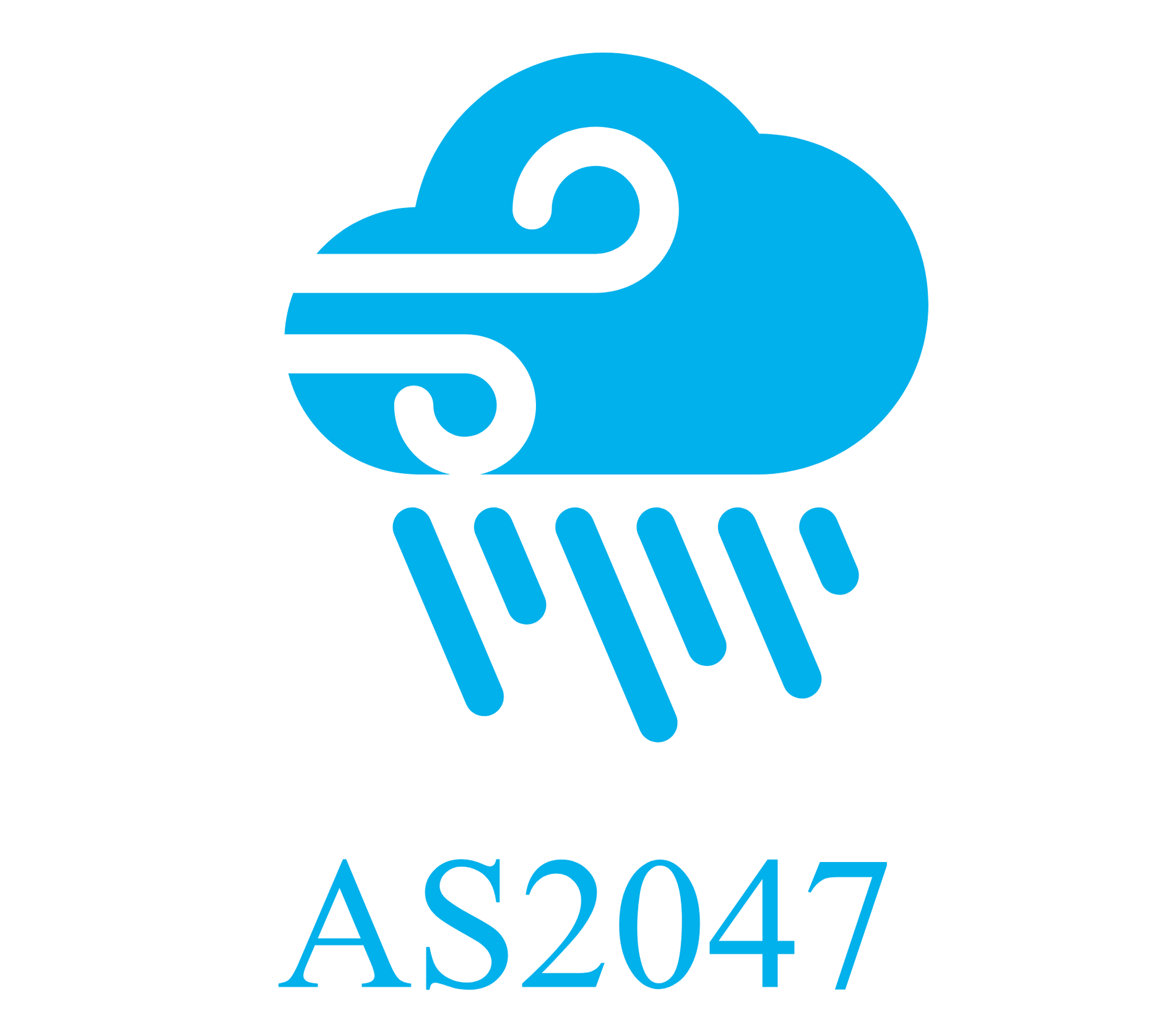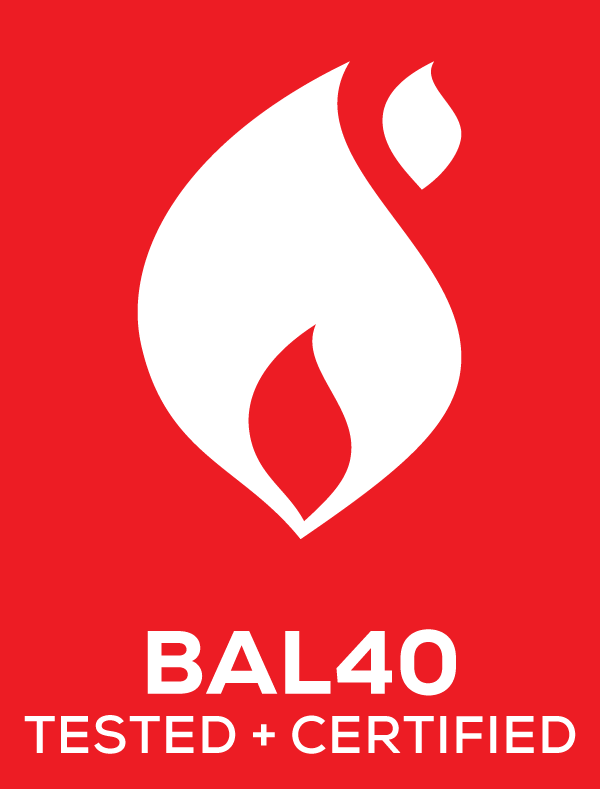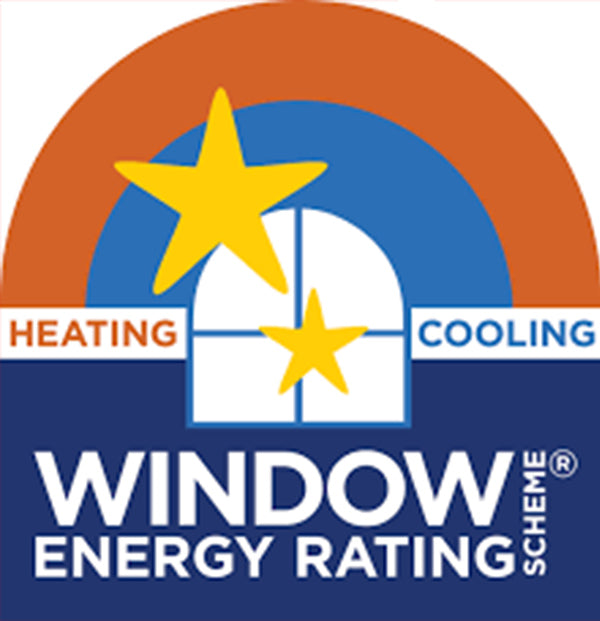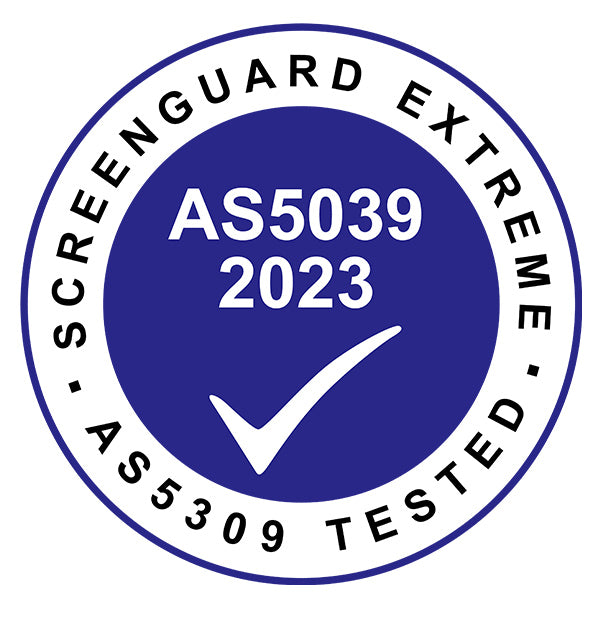AS2047:2014
All Proline window and door systems are fully tested and certified to AS 2047:2014, the Australian standard for performance in structural strength, wind pressure, air and water tightness, and durability.
Compliant with AS/NZS 4420.1:2016, our products are proven to perform reliably in Australia’s toughest climates — from coastal storms to high-altitude wind loads — giving developers total peace of mind.

AS 2047:2014 Key Test Requirements
AS 4420.2 Deflection Test
This test evaluates the structural response of the window or door frame under simulated wind pressures. Both positive and negative pressures, equivalent to the design serviceability wind load, are applied to assess the maximum deflection of framing members.
Standards
The allowable limit is typically Span 1/150. Excessive deflection may lead to functional problems such as seal failure or operational misalignment, especially under prolonged exposure to wind forces.
AS 4420.3 Operating Force Test
This test measures the amount of force required to open and close a sash or operable panel under standard conditions. No pressure is applied during this test. It ensures that the window or door can be operated without jamming, sticking, or excessive effort.
Standards
The maximum operating force must typically be no greater than 100 N, ensuring compliance with user accessibility and ergonomic requirements, especially for residential and aged care buildings.
AS 4420.4 Air Infiltration Test
The +/- 75 Pa wind pressure test is designed to assess how well doors and windows can resist air infiltration and maintain structural integrity under both positive (inward) and negative (outward) pressures. This is crucial for ensuring airtightness, weather resistance, and overall performance in real-world conditions.
Standards
To comply with AS 2047, leakage must not exceed 5.0 L/s·m² for windows and 8.0 L/s·m² for doors. Airtight systems improve energy efficiency and acoustic insulation.
AS 4420.5 Water Penetration Test
This test simulates wind-driven rain by applying positive air pressure (typically 150–450 Pa) while spraying water evenly across the exterior surface. The objective is to assess whether water penetrates beyond the inner face of the window or door assembly.
Standards
Only positive pressure is applied, as negative pressure is not relevant to rain ingress. A compliant system must show no water penetration during the specified test duration.
AS 4420.6 Ultimate Strength Test
This test determines the structural integrity of the window or door under extreme positive and negative pressures, usually 150% of the serviceability wind load, to simulate events such as cyclones or impact forces.
Standards
A compliant product must exhibit no glass breakage, frame detachment, or structural collapse. This test is crucial for occupant safety in high-wind or disaster-prone areas.
FAQ
This FAQ answers key questions about which glazed windows and doors must comply with AS 2047 and which are exempt, helping you navigate compliance with ease.
Which glazed windows and doors need to be tested to AS 2047?
All windows and glazed doors located in the external wall of a building are required to be tested to AS 2047.
Exceptions to this rule are:
- Windows in other than the vertical plane
- Windows containing fixed louvres
- Windows constructed on site
- Architectural one off windows Second hand, re-used, recycled and replacement windows
- Heritage windows
- Glazed doors without a frame
Do adjustable louvres with metal blades, or ones with the top half glass and the bottom half metal, need to comply with AS 2047?
Yes. All louvres on the exterior of a building must comply with AS 2047, notwithstanding the material(s) they are made from.
Do site-assembled window systems using pre-tested components need separate AS 2047 certification?
Yes. Even if individual components have been tested separately, any windows constructed on site must still undergo testing or certification as a complete unit under AS 2047. This ensures structural integrity, water tightness, and air infiltration performance meet the standard in real-world conditions.
Do sliding doors and bi-fold doors need to comply with AS 2047?
Yes. All glazed external doors with frames, including sliding and bi-fold systems, must be tested to AS 2047. These doors form part of the external building envelope and must meet the required performance criteria.
BAL
Proline’s products are certified to BAL-40, offering robust protection against radiant heat, ember attack, and potential flame contact—ideal for buildings located in high-risk bushfire zones.
BAL stands for Bushfire Attack Level, which is a rating system in Australia defined under AS 3959 to measure the potential bushfire risk to buildings. It is based on factors like vegetation type, slope, and distance from fire-prone areas. The levels include:
BAL-LOW: Very low risk – no special fire-resistant construction required
BAL-12.5: Low risk – basic ember protection needed
BAL-19: Moderate risk – higher resistance to heat and ember attack
BAL-29: High risk – increased construction requirements, including bushfire-resistant windows/doors
BAL-40: Very high risk – needs to withstand direct flame and intense heat
BAL-FZ (Flame Zone): Extreme risk – building surfaces directly exposed to flames, materials must meet stringent fire tests

WERS
Proline’s aluminium window and door systems are fully certified under the Window Energy Rating Scheme (WERS), delivering strong thermal and energy performance tailored to Australian conditions.
WERS uses a 10-star rating system across 17 window types. Our high-performance products, including ThermalHEART™, often reach 6–7 stars for heating and 4–5 stars for cooling — among the best in the market.
We’re committed to developing energy-efficient systems that improve comfort and reduce energy use. All products are tested for sealing and insulation performance.
Proper window layout is key to energy savings. Proline supports developers in planning orientation, shading, and system selection to achieve better thermal results.

AS5039
Proline is proud to announce that our security screen doors and window security screens have successfully passed the rigorous Australian Standard AS 5039 certification. This achievement highlights our commitment to delivering products that offer superior protection, durability, and performance in line with Australia’s highest safety standards.

Proline's Compliance with AS 5039 Testing
Knife Shear Test : Proline’s mesh resists incision from sharp blades, ensuring no penetration greater than 150mm.
Impact Test : A 100-joule pendulum impact simulates kicks and blows. The screen must survive five impacts.
Jemmy Test : Simulates prying with tools like screwdrivers or crowbars. The screen must stay locked and intact.
Pull Test :Attempts to pull the screen from its frame. If no gap forms after the Jemmy Test, this test is waived.
Probe Test : Applies 1.5kN (150kg) of force to widen a gap for hand access. Proline mesh is too fine to require this test.
Shear Test : Simulates cutting with pliers. The mesh must resist strand breakage under increasing pressure.


